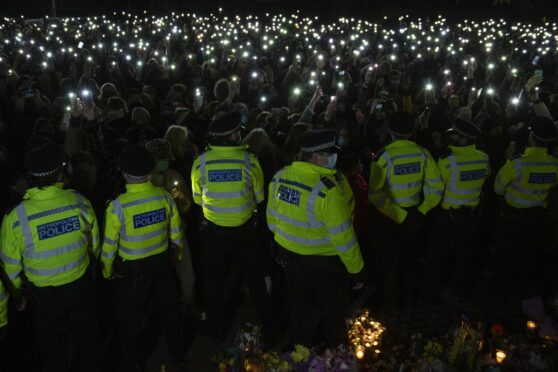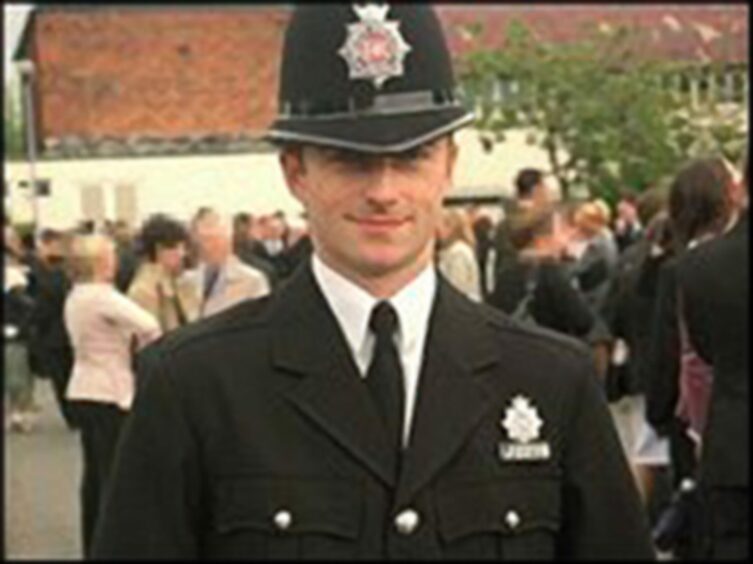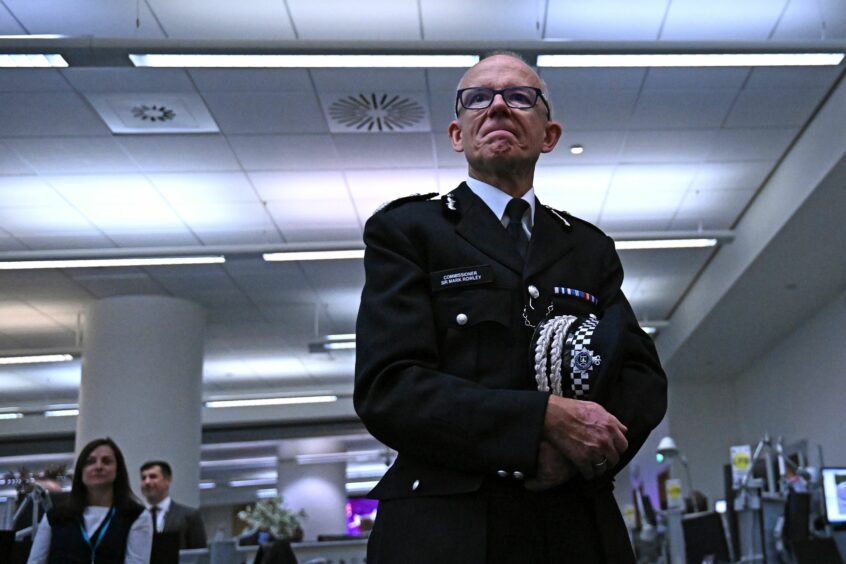
Exactly 20 years ago, I was PC 2210, a new recruit proudly wearing the uniform of one of the UK’s biggest forces, Greater Manchester Police.
During basic training, alongside hundreds of other probationers, I prepared for a career on the beat but I wasn’t the same as the rest – I was a BBC undercover journalist, armed with secret cameras, and I was there to investigate the force.
Over the next few months I covertly recorded appalling racism by my fellow recruits. It ranged from casual stereotypical slurs to the worst kind of poisonous hate. One fantasised about assaulting our Asian classmate while wearing a Ku Klux Klan mask, while his heroes were the racist thugs who murdered London teenager Stephen Lawrence. I’ll never forget my months spent in the company of uniformed racists like PC Rob Pulling.
Our BBC film The Secret Policeman would, when broadcast, shock Britain. Ten officers, including Pulling, were sacked and a wide-ranging inquiry by the Commission for Racial Equality made 125 recommendations for change, including, crucially, improving vetting of new officers. The report concluded the police service across England and Wales was “still frozen to the core” when it came to race issues.
This was not the first warning, however, or even the second.
In 1981, the Scarman Report had found the Metropolitan Police’s disproportionate use of stop and search in the black community contributed to the Brixton Riots. Scarman made recommendations for change, many would be ignored.
Then, in 1999, came what should have been a watershed. Sir William MacPherson published his excoriating report into the Stephen Lawrence murder inquiry. Stephen’s mother, Baroness Lawrence, fought for years to force the Met to confront its racism over the way it investigated her son’s savage and unprovoked killing at the hands of five white racists from south London.
MacPherson’s landmark inquiry concluded the Met was “institutionally racist”. It was a label the force bridled at but grudgingly accepted as it promised change. A task force was set up to ensure violent race crimes were probed correctly. It was soon quietly dropped.
Within a few years, Met chiefs like Cressida Dick would say they no longer recognised the term “institutional racism” as applying to their force. It wasn’t “helpful,” and she insisted there was zero tolerance for racism in the Met.
Yet the force was still disproportionately white. Stop and search in the black community was as high as ever. Black people were twice as likely to die in police custody than white people. It was business as usual. Last week, just a month from the 30th anniversary of the murder of Stephen Lawrence, the consequences of this complacency at the most senior ranks was laid bare by Baroness Casey. Her report is devastating.
She was appointed to review the force’s culture after the murder of Sarah Everard by serving police officer Wayne Couzens in 2021. Her 363-page review condemns the force as institutionally racist, misogynist and homophobic. She found a culture of misogyny, fuelled by “an old boys’ club” mentality, has led to women and children being failed consistently. Black Londoners remained over-policed and under-protected.
Bullying within the ranks is rife, with nearly half of black or Asian officers experiencing racism from their colleagues. A third of women officers have experienced sexual harassment and a fifth of gay officers have suffered homophobic abuse.
The Met is already falling well short of making the force representative of the city it serves and this report will make it no easier to encourage women, black or gay people to join. Even on a positive employment trajectory, the report says it will take 40 years to have women and minorities properly represented in the ranks.
Once more, police vetting is at the core of this crisis. Why is it that racists, misogynists and thugs feel policing is the job for them? It was shocking to me in 2003 that a racist like Pulling managed to pass vetting while the clear and missed opportunities to have halted Couzens beggars belief.
“Rotten to the core” was how Doreen Lawrence described the Met last week, dismissing the regular claims of “a few bad apples”. Who could blame her after a force that had to be shamed into properly investigating her son’s murder was exposed once again?
She said the Met had “30 years to put its house in order” but failed to do so because “it does not want to, or doesn’t know how to”.
Her comments were a counterpoint to those of Met Commissioner Sir Mark Rowley, who accepted much of the review while disputing its conclusion of “institutional racism”. Scathing reports in 1981, 1999, 2004 and now in 2023 warned discrimination was rife within policing. The evidence seems overwhelming.
Casey says she wants Rowley to acknowledge the force has a bigger problem and warns the Met may need to be dismantled if he does not and cannot drive through real change.
Police Scotland is not immune to the same issues. Allegations of racism, for example, are at the heart of the current public inquiry into the death of Fife man Sheku Bayoh, a black man who died while being detained by officers.
For many years, the words “police” and “racism” have been inextricably linked. This latest report feels like the Met has entered last chance saloon. But, according to Doreen Lawrence, any reforms are “doomed to failure” unless there is an acceptance at the very top that racism within the force is institutionalised.
She has been here before and heard the same promises which turned out to be empty. “A lot of people will feel, like me”, she says, “that enough is enough, and change is needed. And needed now.”
Two decades on from my own, brief, time in uniform, Doreen Lawrence, and many others share exactly the same concerns as they did then.

Enjoy the convenience of having The Sunday Post delivered as a digital ePaper straight to your smartphone, tablet or computer.
Subscribe for only £5.49 a month and enjoy all the benefits of the printed paper as a digital replica.
Subscribe
 © CARL DE SOUZA/WPA Pool/Shutterstock
© CARL DE SOUZA/WPA Pool/Shutterstock